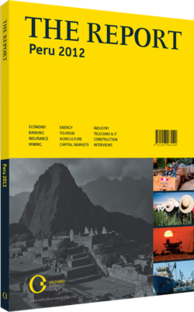OBG talks to Francis Stenning, President, Lima Stock Exchange

Interview: Francis Stenning
How do you expect the introduction of the Integrated Latin American Market (MILA) to affect the Lima Stock Exchange (BVL)?
FRANCIS STENNING: Operationally, there have been no major changes. One of our objectives when we created this model was to make the least possible changes to the infrastructure of our respective markets. We worked mostly at the regulatory level, standardising some of the market practices, most commonly associated with international standards. The MILA provides a much broader market to all participants. Peruvian issuers get immediate exposure to markets in Colombia and Chile. We have also worked on the routing systems, so Peruvian investors, through their local brokers, can directly access the other two markets. Higher liquidity will come with a matter of time. This is not a short-term project; results were not expected on day one.
How will the MILA develop over time and what improvements have been made to it?
STENNING: Since the MILA started operations, we have set three technical teams to work on implementing required changes and updates to the first version and identifying potential areas for operational improvements to be made. We see the need to permanently promote and consolidate this initiative and participate in as many events around the world as possible to explain and promote the MILA. This is the first stock market combination in Latin America.
In terms of additional products and services, we recently signed an agreement with Standard & Poor’s (S&P) to provide the S&P MILA 40 index, an index composed of the 40 largest companies on the MILA. Now, we expect products based on this index to be designed, such as exchange-traded funds. We have also started work on a foreign-exchange market involving all three currencies. Another potential project is to add other stock exchanges/countries to the MILA. My perception is that having a fourth country will make integration occur faster and have a great affect on the MILA.
What do you think can be done to protect the BVL from commodity price fluctuations?
STENNING: In a way, the MILA is a response to this. One of the main selling points of the stock market is that it provides more diversity to all three markets, as Peru is heavily weighted in mining. Colombia has energy-based firms, and Chile is strong in the financial and retail sectors. In Peru, we do not want to lose our mining expertise as a selling point; however, we are looking to build various sponsorship programmes to attract companies from other economic sectors, and particularly medium-sized businesses. We also anticipate the holding of initial public offerings by state-owned firms in the near future. We do not expect the government to sell its participation, merely to recapitalise it using the capital markets as an instrument.
What effects have the adoption of International Financial Reporting Standards (IFRS) and the Index of Good Corporate Governance (IBGC) had?
STENNING: The effects have been very good. The deadline for the IFRS was taken very seriously by all businesses in Peru as well as by the regulators. In partnership with the Latin American Development Bank, we sponsor due diligence and good corporate governance of listed as well as non-listed companies. The response shows that there is a genuine interest to improve this capacity. Peruvian businesses can hardly afford to keep on growing at the levels we have seen in the past decade without opening their capital to third parties, with either debt or selling equity. The economy might be developing at 7% overall, but some sectors are growing at 30%. Therefore, if we want to continue expanding at these levels in the face of foreign competition, technological requirements, etc., we need to become more efficient, and invest and grow at a sustainable pace. Many companies are realising that they need capital and are beginning to look to other markets. That is the driving force behind the growing interest in corporate governance.
You have reached the limit of premium articles you can view for free.
Choose from the options below to purchase print or digital editions of our Reports. You can also purchase a website subscription giving you unlimited access to all of our Reports online for 12 months.
If you have already purchased this Report or have a website subscription, please login to continue.

